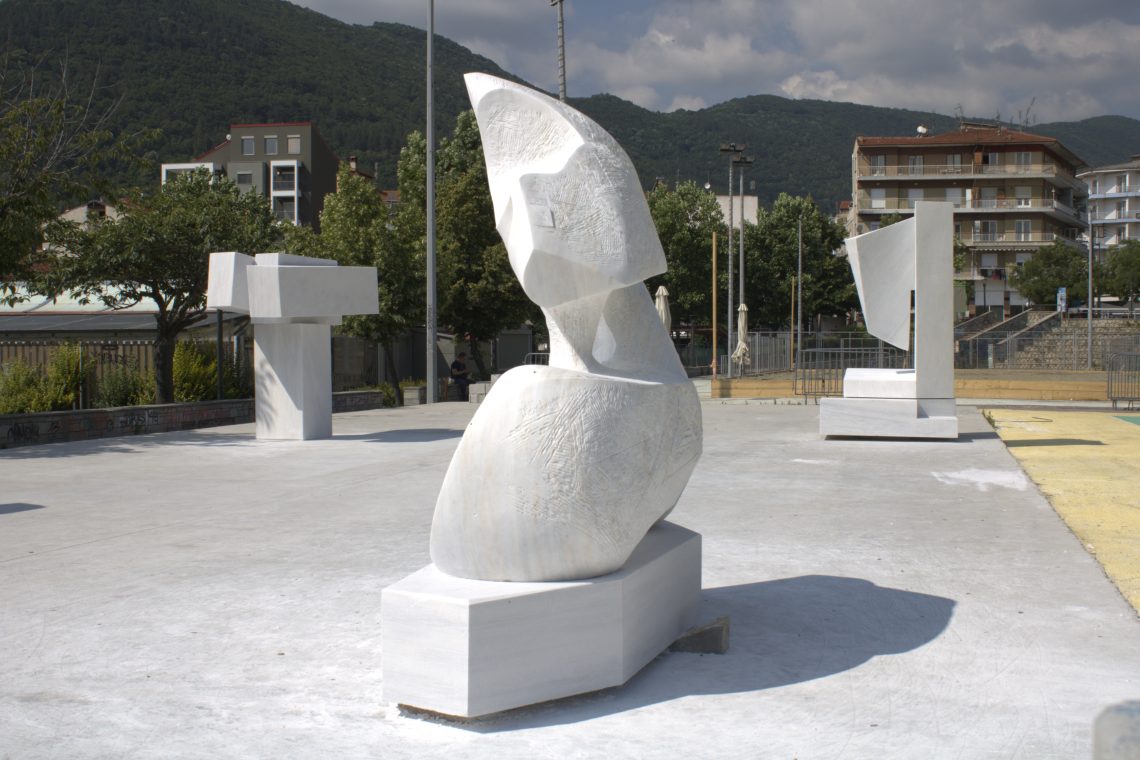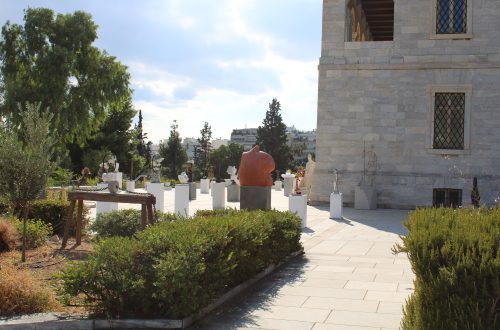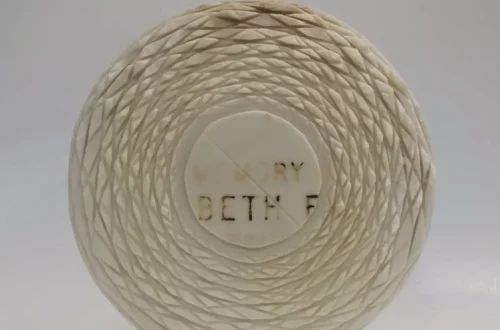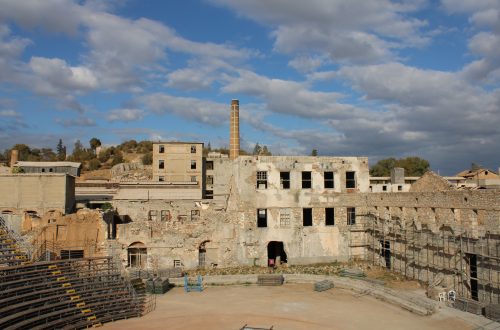
Florina Sculpture Symposium
The Symposium took place within the framework of the cultural interventions of the School of Fine Arts of Florina. The purpose was to highlight the school’s contribution through strengthening the city’s cultural identity and its promotion. For 25 days – from 8 June to 2 July – the residents of the border city of Northwestern Greece had the opportunity to see for the first time how sculptors transformed huge blogs of raw marble from Kozani into forms of expression of emotions and ideas.
For me, it was an unprecedented experience too. In this symposium, there wasn’t a thematic unit. The sculptors were free to express themselves openly and experiment with new forms. All four sculptures are based on drafts modified along the way based on the inspiration of the moment and the challenges presented to the sculptors by the material they had to deal with. The four sculptures will remain in Florina City and be the property of the School of Fine Arts of Western Macedonia.
SHARE THE PAGE
Dimitris Skalkotos
These are the results of a spontaneous expression, especially in that he identifies on the sculpture vital human organs that carry emotions, such as the heart and the brain, not based on a blueprint. Both openings in the center and on the base of the sculpture have a symbolic meaning and refer to what he says “Everything begins from a void.” Thus relief areas mark the end and the beginning as an act of perpetual death and rebirth.
Panayiotis Lamprou
Vasilis Vasili
The chamfered rectangular shape, even though it remains attached to the main body of the sculpture, it is curved to look lighter than the front, emphasized by the axes created at the base. It is as if the sculptor had lifted it slightly further up, following the original call of the axes without seeking a complete detachment from the main body. An additional dynamic element of the Florina sculpture is the incorporation of the shadows natural light produces of the volumes and axes as part of the sculpture in the way they reflect on its flat surfaces.
Odysseas Tosounidis
Photos: © athina’s
follow us


You May Also Like

Sculpting life and myth
24th September 2021
Burial Marks
6th June 2022

 When you visit any website, it may store or retrieve information on your browser, mostly in the form of cookies. This information might be about you, your preferences or your device and is mostly used to make the site work as you expect it to. The information does not usually directly identify you, but it can give you a more personalized web experience. Because we respect your right to privacy, you can choose not to allow some types of cookies. Click on the different category headings to find out more and change our default settings. However, blocking some types of cookies may impact your experience of the site and the services we are able to offer. For more information please read our
When you visit any website, it may store or retrieve information on your browser, mostly in the form of cookies. This information might be about you, your preferences or your device and is mostly used to make the site work as you expect it to. The information does not usually directly identify you, but it can give you a more personalized web experience. Because we respect your right to privacy, you can choose not to allow some types of cookies. Click on the different category headings to find out more and change our default settings. However, blocking some types of cookies may impact your experience of the site and the services we are able to offer. For more information please read our